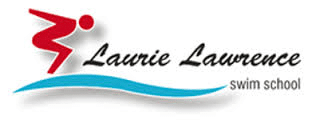
Book your free
swimming assessment
We offer free assessments for all new students to assess your child’s swimming ability. We then recommend the correct learn to swim level for your child. Assessments run for approximately 10-15 minutes. If your child is under 4 years of age an assessment is not required as they can enrol straight into an aged based infant class.
General FAQs
Please view our frequently asked questions below or call for further details…
For the simple reason that the more the children practice the faster they will learn and acquire strong swimming skills.
Think about it if you bring your child to one half hour lesson per week they are receiving a total of 26 hours of swimming per year.
Remember if your child is frightened go very slowly all it takes is patience and time with frightened children.
One of the most common reasons for children to become scared is lack of control. For a child to be in control in the water they need shallow water. They need to be able to either sit on a ledge or stand up on the bottom of the pool by themselves. When they are doing this they are in control. If you are holding your child in deep water they are not in control you are. Therefore, playing in a pool that is shallow or on a ledge is essential for the frightened beginner.
Once they have built up their confidence in the shallow you can gradually introduce them to the deeper water. This can be done through reassuring your child that you are there with them and through setting small tasks for your child to accomplish. For example, letting them play on the ledge and then saying lets go and touch the lane rope (out in the deep) and then we’ll come straight back and play on the ledge. Slowly but surely your child will build confidence.
Learning must be fun for parent and child. Insisting children perform learn to swim activities while they cry or show signs of distress is inappropriate. However, it is unrealistic to say that children will never cry during a swimming lessons. Young children communicate their needs and problems through crying. Avoid scheduling a lesson during baby’s sleep or feed time.
Ideally children should enter and leave the swimming lesson happy and relaxed. If your child becomes unsettled during the swimming lessons try to remain calm and respond to their needs using communication, stimulation and distraction. Remember if you get out of the pool every time your toddler cries, then they may associate getting out of the pool with crying. You may need to find a quite space on one of our shallow water teaching ledges to sooth your child as you communication, maintain eye contact and provide positive facial expressions. Play will be vital in helping to relax your child and teach them to love the water. If you are having ongoing concerns with your child being unsettled during the lesson please speak with one of our experienced team members.
LLSS recommends caps to children participating in learn to swim classes and above. Caps are great for keeping long hair out of faces and they also assist in hygiene allowing us to keep our pool clean and tidy.
Goggles are not a necessity. However they may help if children have sensitive or sore eyes. With goggles it is important that children do not become reliant on them. This means leaving goggles at home every second week or only allowing children to wear goggles for half the lesson. Remember children need to learn to swim without goggles for safety reasons e.g. if they fall in.
Every child is different and therefore it is impossible to give an exact answer to this question. However practice and exposure are the keys to learning therefore if you want your child to learn fast you need to take them to the pool regularly this means two or more times per week. Holiday courses are a great opportunity for fast progression because the children get to practice every day.
All staff hold professional qualifications, Importantly our staff are trained in Laurie’s teaching methods to ensure the highest quality of teaching. The Swim School holds national qualifications with Austswim, Swim Australia & The Australian Swim School Association.
At LLSS we start babies in the pool at four months. However, parents can begin swimming lessons at home in the bathtub from the day a baby is born. Please click on the link to see our step by step guide of how to start.
https://youtube.com/playlist?list=PLN11fdxorPI9hJE1pvJj1Sw76Yo34mM7w
Give them opportunities to practice. The more they practice the better they will get so take your children to friends’ pools, public pools or book in for an additional lesson. Also think about things that you can practice out of the water. Eg. “high elbows”
Our friendly reception staff are your first port of call if you have any concerns or need to make any changes to their lessons
Payments are required weekly via direct debit only. Family & multiple lesson discounts apply.
Laurie Lawrence Swim School has a strict NO MAKE UP policy. We value commitment and consistency within our program and do not believe we can offer quality lessons by offering make up lessons.
2 weeks written notice is required for any cancellations
Laurie promotes the concept of group dynamics in a learning environment provided the children are grouped according to ability levels. He believes the natural competition within the group helps faster skill development. Children learn through seeing, interacting, and competing with other children in their class. For this reason Laurie will accommodate but does not recommend private lessons.
Children should learn the feel of their own buoyancy and be able to experience that fun floating sensation before propulsion is taught. Learning to swim without floatation devices teaches children a respect for the water. Floatation devices should never replace adult supervision.
Lessons run year round with scheduled breaks throughout for Easter & Christmas etc (Holiday programs are available). A perpetual program allows swimmers to continually develop and improve their skills.

© Copyright 2022 - laurielawrenceswimschool.com